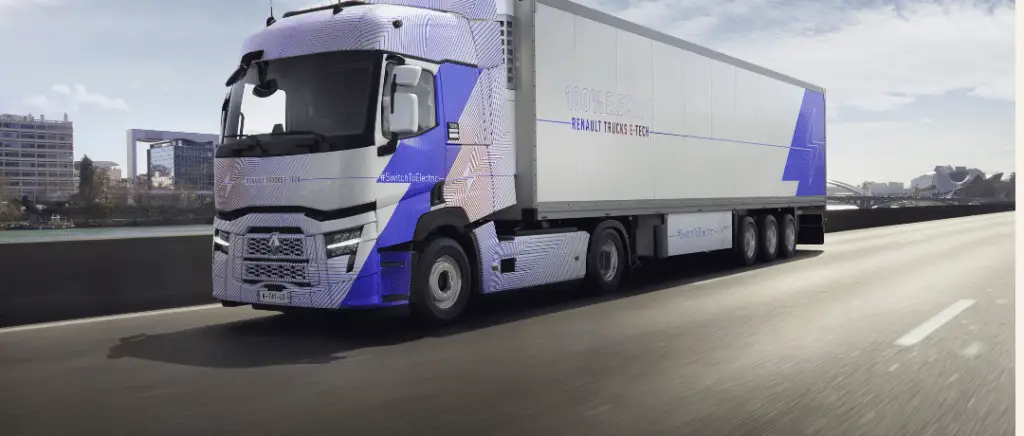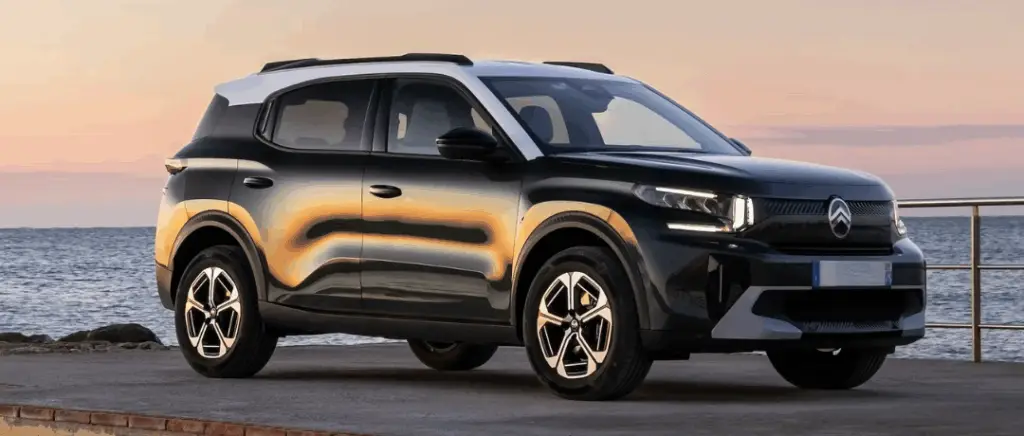Why should we be interested in electric trucks in 2025?
The year 2025 marks a decisive turning point in the road transport industry, with increasing attention being paid to electric trucks. This development is part of a wider context of energy transition and the fight against climate change. Electric heavy goods vehicles, once seen as a technology of the future, are gradually becoming a reality on our roads.
As environmental regulations become stricter and low-emission zones multiply in urban centres, hauliers and logistics companies are under increasing pressure to rethink their fleets. Electric trucks offer a promising solution to these new challenges, with long-term economic benefits.
However, the adoption of these electric vehicles is not without obstacles. Initial acquisition costs remain high, and questions persist as to the viability of electric vehicles.autonomy and recharging infrastructure. It is in this context that government subsidies, such as the CEE premium, play a crucial role in encouraging the transition to more environmentally-friendly electric vehicle fleets.
An accelerating energy transition
Electric trucks, once seen as a marginal option, are now becoming an essential solution for companies concerned about the environment and their competitiveness. This acceleration is due to a number of converging factors:
- The introduction of Low Emission Zones (LEZs) in many European cities, restricting access to diesel vehicles.
- Government financial incentives in the form of grants and tax credits to encourage the adoption of electric vehicles.
- A significant reduction in long-term operating costs, despite a higher initial investment.
- Constantly improving battery performance, increasing range and reducing recharge times.
- Increasingly strict European regulations, aiming to reduce CO2 emissions from new heavy goods vehicles by 30% by 2030.
This convergence of technological, economic and regulatory factors is creating an environment conducive to the mass adoption of electric trucks. Manufacturers anticipate that 40 to 50% of their sales will be zero-emission vehicles by 2030, reflecting the scale of this energy transition.
The economic and technological challenges to be overcome
Despite the progress made in the field of electric trucks, a number of obstacles remain in 2025. The initial investment cost remains a major obstacle for many hauliers. The purchase price of an electric truck is still around two and a half times higher than that of a comparable diesel model. This difference in cost, although decreasing, still represents a major economic challenge for transport companies operating with profit margins that are often low, in the region of 0 to 2%.
The range of electric vehicles, although constantly improving, remains a concern for long-distance journeys. Current models generally offer an operating range of around 200 km, which only covers part of the needs of regional transport operators. This limitation imposes significant logistical and operational constraints.
L'recharging infrastructure is also a major challenge. Recharging an electric truck requires a certain amount of power. This requirement raises questions about the capacity of the current electricity grid to support a large fleet of electric trucks, necessitating substantial investment in grid development and expansion.
Finally, the lack of long-term feedback on the durability and performance of electric trucks in intensive use still raises questions among industry players. These uncertainties may hold back the widespread adoption of this technology, despite the potential benefits in terms of reduced emissions and long-term operating costs.
New support for electric trucks in 2025: what you need to know
The French road transport sector is set to undergo a significant change in 2025 with the introduction of new subsidies for the acquisition of electric trucks, in line with the objectives of the LOM law for transport companies.
This initiative is part of national efforts to decarbonise the transport sector and promote more sustainable mobility solutions. French road hauliers, who have long faced economic challenges in adopting electric heavy goods vehicles, will benefit from a new aid scheme based on Energy Saving Certificates (CEE) for companies in the sector.
This change marks a major overhaul of the support system, moving from Ademe's calls for projects to a more flexible mechanism that can be accessed on an ongoing basis. CEE incentives for the purchase or lease of electric trucks will be available from January 2025, offering improved visibility and planning for transport companies. This development promises not only to simplify access to grants, but also to speed up the transition to a more environmentally-friendly HGV fleet.
An overhaul of the system: the arrival of EWCs in the transport sector
The government has opted for a complete overhaul of the support system, abandoning Ademe's calls for projects in favour of Energy Savings Certificates (EECs). This transition, formalised by a decree published on 31 December 2024, has a number of advantages:
- Immediate availability: Unlike in previous years, aid will be available from January 2025, avoiding the delays that may have dampened hauliers' purchasing intentions.
- Continuity of the system: The system is in force until 31 December 2026, providing medium-term visibility for players in the sector.
- Administrative simplification: The procedures for accessing aid have been simplified, meeting the expectations of the industrial sector.
- Neutral impact on the budget: Financing will now be the responsibility of energy suppliers, lightening the burden on public finances.
This new scheme, based on the EWC form TRA-EQ-129 "Purchase or hire of electric heavy goods vehicles", establishes a bonus according to the type of vehicle, with aid of up to 53,000 euros for the largest vehicles. This approach aims to accelerate the transition to greener transport fleets, while offering substantial financial support to companies in the sector.
How do energy saving certificates (EEC) work?
Energy saving certificates (CEE) are the new support mechanism for the purchase of electric trucks in 2025. These certificates, issued by the public authorities, represent recognition of the energy savings generated by the acquisition of more environmentally-friendly vehicles. The CEE scheme is based on several key principles:
- Financing : CEEs are financed by energy suppliers, known as "obligated parties", who have an obligation to support energy transition operations.
- Unit of measurement: CEEs are expressed in kWh cumac, a specific unit representing the energy saved over the lifetime of the vehicle.
- How the grant is calculated: The amount of aid is determined according to the size of the company's fleet and the type of vehicle, with bonuses of up to €53,000 for certain models.
- Procedure: Before placing any orders, you need to obtain the prior agreement of the energy supplier who will be paying the premium.
This system, in force until 31 December 2026, offers greater flexibility to operators than previous calls for projects, while avoiding adding to the public debt.
The benefits of EWCs for hauliers
The new aid scheme based on Energy Savings Certificates (EECs) offers a number of significant advantages to hauliers planning to purchase electric trucks in 2025. Firstly, the system ensures that the aid will be available immediately from January 2025, avoiding the delays seen in previous years. In addition, the system's ease of access and multi-year visibility meet the industry's expectations, as Marie Defrance of CSIAM points out.
Hauliers also benefit from substantial assistance, up to €53,000 for a 26-tonne truck or road tractor. This significant financial assistance considerably reduces the price differential between electric trucks and their diesel counterparts, making the investment more attractive.
Lastly, the EWC system offers greater flexibility to transport operators, enabling them to submit their applications for aid from January 2025, without being constrained by time-limited periods for calls for projects.
How much support will electric trucks receive in 2025?
The new system of aid for the purchase or lease of electric trucks in 2025 offers substantial amounts, varying according to the type and size of the vehicle. This aid, available via the Energy Savings Certificates (EEC) scheme, has been designed to encourage the transition to more environmentally-friendly transport fleets. The amounts allocated are calculated according to specific criteria, taking into account not only the category of vehicle but also the size of the applicant company's fleet. This approach aims to offer support tailored to the different needs of transport operators, whether they are small businesses or large fleets.
Specific premiums depending on the category of vehicle
The amounts of aid for electric trucks in 2025 vary according to the category of vehicle, offering specific bonuses to encourage the adoption of these greener vehicles. Here are the main grants available:
- For a 19-tonne forwarder, the aid can be as much as €35,000.
- HGVs over 26 tonnes or road tractors can benefit from aid of up to €53,000.
- Standard coaches are eligible for a premium of up to 44,000 euros.
- Light commercial vehicles (LCVs) can receive between €2,600 and €3,200, depending on the size of the company's fleet.
These grants, based on the Energy Savings Certificates (EEC) system, will be available until 31 December 2026. It is important to note that in order to obtain these grants, you must first obtain the agreement of an obligated company (energy supplier) before signing any quotation or order.
Practical example: aids for rigids, road tractors and coaches
Support for the purchase of electric trucks in 2025 will vary according to the type and weight of the vehicle. Here is an overview of the amounts available:
- For a 19-tonne forwarder, the aid can be as much as €35,000.
- Lorries weighing over 26 tonnes and road tractors benefit from more substantial aid, up to €53,000.
- Standard coaches are not left out, with aid of up to 44,000 euros.
These amounts are accessible via the Energy Savings Certificates (CEE) scheme and will be available until 31 December 2026. It is important to note that obtaining these grants requires the prior agreement of an obligated company (energy supplier) before any quotation or order can be signed. This new system, which is more flexible than the previous calls for projects, will enable hauliers to benefit from significant financial support to accelerate their transition to a greener fleet.
Conditions for receiving CEE aid
To qualify for CEE (Certificats d'Économies d'Énergie) aid when purchasing or leasing an electric truck in 2025, companies must meet a number of essential conditions.
First of all, it is essential to obtain the prior agreement of the obligated company (electricity or gas supplier or fuel distributor) that will pay the bonus, before signing any quotation or order. The vehicles concerned must be new or retrofitted, and correspond to the categories specified in EEC sheet TRA-EQ-129.
The amount of aid will be determined according to the size of the recipient company's fleet. It is important to note that applications can be submitted as early as January 2025, offering greater flexibility than the previous system. Finally, companies must be prepared to provide the necessary documentation to justify their eligibility and compliance with the criteria established by the EWC scheme.
How to obtain aid for electric lorries
Obtaining aid for the purchase or lease of electric trucks in 2025 requires a methodical approach and a good understanding of the new system. Interested hauliers and companies must navigate a process that, although simplified, requires particular attention at certain crucial stages.
To maximise your chances of obtaining the financial support available, it is essential to identify the key contacts and follow the established procedures to the letter. Knowing the steps to follow and the people involved in the process is vital if you are to benefit fully from this support, which can amount to significant sums depending on the type of vehicle concerned.
Key stages in a successful application
To maximise your chances of obtaining the aid available for the purchase of electric trucks in 2025, follow these essential steps:
- Obtain the prior agreement of an obligated company (electricity or gas supplier or fuel distributor) before signing a quotation or placing an order.
- Calculate the potential amount of aid based on the size of your vehicle fleet, using the kWh cumac unit.
- Carefully prepare your application file in accordance with the regulatory provisions common to Energy Savings Certificates (EEC).
- Check that your project meets the criteria set out in EWC sheet TRA-EQ-129 "Purchase or hire of electric heavy goods vehicles".
- Anticipate the processing times and operational procedures that will be put in place by energy suppliers in the coming weeks.
By following these steps carefully, you'll significantly increase your chances of benefiting from the substantial grants on offer for the acquisition of electric trucks in 2025.
Key contacts: who should you talk to?
To obtain subsidies for the purchase of electric trucks in 2025, road hauliers need to contact energy suppliers and fuel distributors. These companies, known as "obligated parties", are responsible for financing energy transition operations via the Energy Savings Certificates (EEC) scheme.
It is crucial to obtain the prior agreement of these companies before signing a quotation or placing an order for an electric truck. The operational procedures for obtaining these bonuses should be put in place by these suppliers in the coming weeks.
In addition, the Directorate-General for Energy and Climate (DGEC) of the Ministry of the Economy and Finance plays a key role in defining and supervising this aid scheme. Hauliers can also contact the Chambre syndicale des importateurs d'automobiles et de motocycles (CSIAM) for further information on how to access this aid.
Electric trucks: what does the future hold?
The future of electric trucks looks bright, driven by technological advances and increasingly stringent environmental policies. Manufacturers are investing heavily in research and development, with the prospect of significant improvements in performance and range.
At the same time, the European Union is tightening its regulations, aiming to reduce CO2 emissions from new heavy goods vehicles by 30% by 2030. This dual dynamic - technological and regulatory - should accelerate the adoption of electric trucks, particularly in urban areas and for regional journeys, where they already offer considerable advantages in terms of reducing emissions and noise pollution.
Expected trends in costs and performance
The expected trend in the cost and performance of electric trucks points to a promising future for this fast-changing sector. Manufacturers are investing heavily in research and development, which should result in significant improvements by 2025. We can expect :
- Continued reduction in acquisition costs, with prices set to fall by up to 50% compared with current levels.
- Improved range thanks to more powerful batteries, reducing current limitations on long journeys.
- Shorter recharge times and greater payload capacity make these vehicles more competitive with their diesel counterparts.
These technological advances, coupled with the lower operating costs already seen, should make electric trucks increasingly attractive to transport companies. However, the price differential with diesel trucks remains a challenge to overcome, with the current surcharge varying between 50% and 250%..
Experts believe that to be truly competitive in terms of total cost of ownership, electric trucks should not be more than 30% more expensive to buy than their diesel equivalents.
The impact of European policies on the sector
European policies are playing a crucial role in the development of the electric truck sector. The European Union has set ambitious targets for reducing CO2 emissions from heavy-duty vehicles, which is driving manufacturers to speed up the development and marketing of electric solutions. These policies are reflected in a number of initiatives:
- Stricter emissions standards for new trucks, encouraging manufacturers to invest in clean technologies.
- The introduction of financial incentives at national level, such as the Energy Savings Certificates (EEC) system in France, which offers substantial grants for the purchase of electric trucks.
- Support for the roll-out of recharging infrastructure, essential for the long-term viability of electric trucks.
These measures aim to create a favourable environment for the adoption of electric trucks, while stimulating innovation and the competitiveness of European industry in this field. However, the success of these policies will depend on their consistency and long-term stability, as well as on the ability of manufacturers and hauliers to adapt to this technological transition.
Summary table
| Theme | Key points |
|---|---|
| General context |
|
| Advantages of electric trucks |
|
| Challenges to overcome |
|
| Government aid in 2025 |
|
| Conditions for receiving aid |
|
| Future prospects |
|
| Impact of European policies |
|
Conclusion
In conclusion, 2025 marks a decisive turning point for the adoption of electric trucks in France. The new aid system based on Energy Savings Certificates (CEE) offers substantial and simplified financial support to hauliers, with bonuses of up to €53,000 for the largest vehicles. This transition to a greener fleet is supported by converging factors such as the introduction of low-emission zones under the LOM law, improved battery performance and stricter European regulations.
Despite persistent challenges such as high initial costs and range limitations, these financial incentives, combined with the reduction in long-term operating costs, are creating an environment conducive to accelerating the energy transition in the road transport sector. The LOM law requires companies with more than 50 employees and a fleet of more than 100 vehicles to gradually convert their fleets to low-emission vehicles.
Do you want to go electric? Beev can help you make the transition to greener, more sustainable mobility. Whether you're an individual looking for a installation of home charging points or a professional requiring installation of recharging points for professionalswe are simplifying theinstallation of a recharging pointby offering you tailor-made solutions to meet your specific needs.
Make your energy transition now, with a range of new 100 % electric vehicles available for leasing from Beev!
































